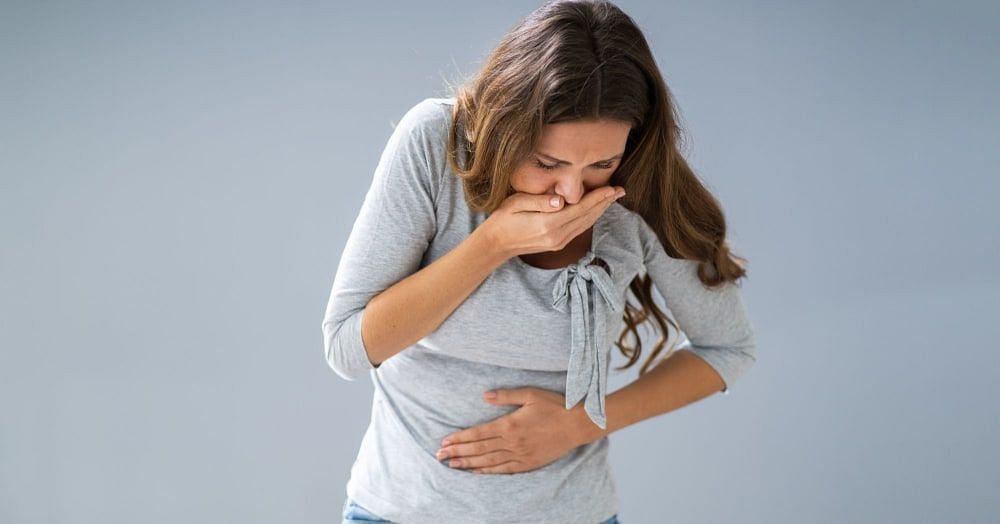The usual menstrual cycle lasts 28 days. However, any length between 25 and 35 days is considered normal. Slight variations from month to month are expected, but your cycle should be consistent. However, an inconsistent menstrual cycle can be a cause of concern.
Oligomenorrhea is a condition in which you miss your period for 35 days, resulting in just four to nine periods per year. Abnormally lighter bleeding is experienced in oligomenorrhea. Read on to know more about this condition and its treatment.
What Is Oligomenorrhea?
Oligomenorrhea is a condition in which your menstrual cycles are irregular with light bleeding, and it affects women who are of childbearing age. Although some variance in menstruation is average, oligomenorrhea is diagnosed when a woman spends more than 35 days without a period.
Oligomenorrhea Definition
Periods can be inconsistent due to menstrual cycle abnormalities. Although some women are unconcerned about missing their period, these changes should always be discussed with a health care professional since they might indicate underlying medical issues and have long-term health implications. Oligomenorrhea definition is that it is the medical word for irregular menstrual cycles (fewer than six to eight periods per year).
How Common Is Oligomenorrhea?
Approximately one-third of women have irregular periods, suggesting that irregular periods are relatively common. However, if you have fewer than eight periods per year, have gone three months without a period, or are worried about your cycle, you should visit your doctor. About 13.2 per cent of the population suffers from oligomenorrhea, and this rate rises to 20% for women who already have reproduction concerns.
Oligomenorrhea Symptoms
A variety of variables can impact the hormones that control the menstrual cycle for a short time. However, if a person's periods abruptly alter and do not revert to what they were for most of their menstrual life, it's critical to discover what's causing the shift. Oligomenorrhea symptoms arise from irregular periods mostly.
Oligomenorrhea symptoms are as follows:
- Going without a period for more than 35 days
- Going a year with less than nine periods
- Menstrual periods that aren't as regular as they should be
- Periods with less bleeding than normal
- Changes in the colour of the menstrual blood
Causes of Oligomenorrhea
Causes of Oligomenorrhea can be a variety of factors. Even though it is not considered a disease, oligomenorrhea might signify other health issues. Causes of Oligomenorrhea are mentioned below:
- Oligomenorrhea is most commonly a side effect of hormonal birth control. Some women have irregular and lighter periods for three to six months after starting birth control. Their periods may come to an end at any time.
- This syndrome can occur in young women who participate in sports or engage in strenuous activity.
- This syndrome can also be caused by eating disorders, including anorexia nervosa and bulimia.
- Due to changing hormone levels, oligomenorrhea is frequent in adolescent girls and perimenopausal women.
- Women with diabetes or thyroid disorders may experience oligomenorrhea.
- It's also frequent in women who have high blood levels of prolactin protein.
- Antipsychotics and anti-epileptics are two medications that can reduce menstruation and cause oligomenorrhea.
How Is Oligomenorrhea Diagnosed?
A review of your menstrual history is carried out to identify oligomenorrhea. Physical examinations, blood tests, and ultrasound imaging may all be required. A missing menstrual cycle or gentle flow is usually unproblematic. However, it might occasionally signal the existence of polycystic ovarian syndrome (PCOS). The specific aetiology of PCOS is unknown, although insulin resistance, high levels of certain hormones, and irregular menstrual cycles may all play a role.
Your doctor will begin by performing a physical examination to look for lumps, sore spots, or excessive body hair. Another crucial test is a vaginal speculum examination, which involves checking your vaginal walls and cervix for infection, inflammation, scar tissue, and growths.
After your Oligomenorrhea physical examination, your doctor may order blood tests to assess your hormone, blood sugar, and protein levels. One or more of the following tests may be ordered by your doctor:
- Thyroid-stimulating hormone (TSH)
- Follicle-stimulating hormone (FSH)
- Luteinizing hormone (LH)
Additional tests, including a CT scan, ultrasound, cervical swab, and MRI, may be performed based on your examination and blood work results.
Oligomenorrhea Treatment
On its own, oligomenorrhea treatment isn't a significant procedure. Hormonal birth control or progestin usage can alter menstrual cycles. Oligomenorrhea can sometimes signify a deeper issue, such as an eating disorder that needs to be addressed. Other women may need to reduce their workouts.
Oligomenorrhea Treatment at Home
In order to get rid of the symptoms, oligomenorrhea treatment at home can be the first step. Many lifestyle choices have been connected to irregular periods. Some of the reasons include smoking, lack of exercise, alcohol, coffee, travel, stress, and medicines.
Oligomenorrhea treatment at home includes home remedies which are as follows:
1. Papaya
According to studies, eating green, unripe papaya might help you regulate your periods and flow. To get rid of oligomenorrhea, eat papaya every day. Regularly eating papaya aids in the contraction of the uterine muscles. The fruit includes carotene in addition to creating heat in the body. The oestrogen hormone levels in the body are stimulated or regulated by this chemical. Periods become more frequent as a result of this.
2. Turmeric
Turmeric, also known as Haldi, has several therapeutic properties. The plant aids in hormone balance and cycle regulation. It has antispasmodic and anti-inflammatory effects beneficial to you and your health. Dissolve a teaspoon of turmeric in a glass of milk or water. When drinking milk, you can also add honey or jaggery. Every day, do it again.
3. Ginger
Ginger has properties to help you augment and manage your period flow. Ginger includes gingerol, which aids in the reduction of inflammation in the body. It aids in the contraction of uterine muscles and maintaining hormonal equilibrium. It standardises the occurrence of periods on a monthly basis. Boil the ginger for 5 minutes, add a little sugar and drink it down. After each meal, consume the combination three times.
4. Cinnamon
This fragrant household item offers a slew of health advantages that aren't well known. It offers characteristics that will help you control your cycle and warm your body. Cinnamon acts as a vasodilator, boosting blood flow in the uterine region, which aids in the regulation of irregular menstruation and the induction of menstruation in women who have irregular periods. Dissolve the cinnamon powder in a glass of warm milk and drink.
5. Aloe Vera
When it comes to aloe vera, it's best to avoid using it while you're on your period. This plant aids in the natural regulation of your cycle and the health of your hormones. Aloe Vera can assist in regulating your hormones and tackling menstruation abnormalities. It also boosts your metabolism and maintains your digestive system. Extract the gel from the plant, mix with one spoonful of honey, and drink it every morning before breakfast.
Oligomenorrhea Treatment in Ayurveda
Oligomenorrhea treatment in Ayurveda is about diet changes and lifestyle recommendations. Finding and treating the disease's aetiology is integral to disease treatment. Simple dietary and lifestyle adjustments and herbs can aid in managing and treating this condition.
(AAHAR) DIET RECOMMENDATIONS
- When calcium or vitamin D levels are low, supplements may be required.
- Menstrual abnormalities may be helped by coriander seeds, thyme tea, and other herbs because of their emmenagogue properties. Emmenagogues are herbs that increase blood flow in the pelvic and uterine areas.
(VIHAR) LIFESTYLE CHANGES
- Regular exercise
- Reducing excessive tea or coffee use
- Increasing water intake to flush out toxins
- Adequate sleep for seven to eight hours to alleviate stress
Risks of Oligomenorrhea
If left untreated, oligomenorrhea can lead to osteoporosis, acne, cardiovascular problems, neurological diseases, infertility, endometrial hyperplasia (a condition in which too many cells grow up in the uterine lining), and endometrial cancer.
If you have any worries about your monthly periods, talk to your doctor to maintain your reproductive health in excellent shape.
Conclusion
Oligomenorrhea isn't usually a serious ailment, but it might signify something else. Menstrual problems are still being studied, and researchers are particularly interested in the impact of genetics on menstruation and the link between low body fat and hormone balance.
Risks of endometrial hyperplasia and endometrial cancer can be increased by having fewer than four menstrual cycles per year for years, spontaneously and without birth control tablets. Consult your doctor if you haven't had a period in more than 35 days.
FAQs
What Is the Difference Between Amenorrhea and Oligomenorrhea?
Amenorrhea is the absence of menstruation. There are two categories: primary amenorrhea and secondary amenorrhea, and these terms refer to the time when menstruation stops.
On the other hand, oligomenorrhea is a condition in which menstrual cycles are infrequent, occurring more than 35 days apart. Light or scanty flow is also ordinary in the first years after menarche and before menopause.
Is PCOS the Same as Oligomenorrhea?
Oligomenorrhea is common in people with polycystic ovarian syndrome (PCOS). PCOS is a syndrome in which the ovaries produce too many androgens (male sex hormones). Menstrual abnormalities in people with PCOS vary from oligomenorrhea and amenorrhea to cumbersome, irregular cycles. Premenopausal women make up roughly 6% of the population.
Can Hypothyroidism Cause Oligomenorrhea?
Hypothyroidism can also cause irregular or nonexistent periods (amenorrhea) (oligomenorrhea). Irregular periods are more prevalent in people with hypothyroidism. Excessive thyroid releasing hormone (TRH) in persons with hypothyroidism can cause absent or uncommon cycles.
The pituitary gland (a pea-sized structure near the base of the brain) releases prolactin in response to elevated TRH levels. The capacity of the ovaries to make estrogen is hampered by too much prolactin. Reduced oestrogen can cause various reproductive health symptoms and problems, such as irregular or nonexistent periods.
Can I Get Pregnant With Oligomenorrhea?
Oligomenorrhea might make it more difficult for you to conceive. You may have a tough time conceiving if your menstrual cycle isn't functioning normally. If you want to get pregnant but have irregular periods, your doctor will likely prescribe ovulation-inducing medicine.
Is Oligomenorrhea Genetic?
Oligomenorrhea is a common symptom among young women who are just starting their menstrual cycles and premenopausal women, and it is a natural part of the menstrual cycle's lifespan. However, oligomenorrhea does not run in families and is not genetic.
References
- David G. Wozniak, Jaunary 2013; Characteristics of scheduled bleeding manipulation with combined hormonal contraception in university students - https://www.contraceptionjournal.org/article/S0010-7824(13)00002-4/fulltext
- Abnormal Menstruation (Periods) - https://my.clevelandclinic.org/health/diseases/14633-abnormal-menstruation-periods
- What are the common treatments for menstrual irregularities? - https://www.nichd.nih.gov/health/topics/menstruation/conditioninfo/treatments











